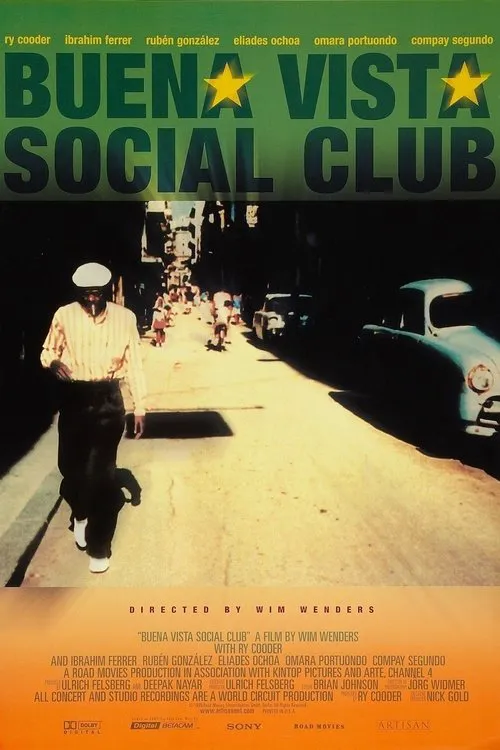Buena Vista Social Club

Plot
Set against the vibrant backdrop of Cuba's rich musical heritage, Buena Vista Social Club weaves a poignant and captivating tale of rediscovery, friendship, and the indomitable spirit of music. The film chronicles the extraordinary journey of a group of aging Cuban folk musicians, brought together by American guitarist Ry Cooder to create a Grammy-winning CD, which would catapult their legendary music to an international audience. Ry Cooder's vision was to assemble a collective of veteran musicians to record an album that would showcase the timeless beauty of Cuban music. Armed with an open-minded curiosity and a deep appreciation for the genre, Cooder ventured to Cuba, where he encountered an ensemble of seasoned musicians, some of whom were then in their early nineties. These gifted artists, each with their own unique story, possessed a wealth of musical knowledge and experience, shaped by decades of performing and improvising in the streets, bars, and clubs of Cuba. Among the musicians who would form the core of the Buena Vista Social Club was Compay Segundo, a singer-songwriter and guitarist who had performed with the legendary group Septeto Nacional de Oriente in the 1920s and 1930s. The venerable Compay, sporting a wispy beard and a radiant smile, brought an air of timeless elegance to the group's performances, as if the passing of years had only sweetened his voice and enriched his playing. Another key figure was Ibrahim Ferrer, a soft-spoken crooner and trumpeter who joined Segundo in performing classic Cuban songs, imbuing them with a deep sense of longing and nostalgia. Ferrer's soulful vocals, often accompanied by the tender support of Segundo's guitar and a lilting rhythm section, captured the film's audience and transported them to a bygone era, where the struggles and triumphs of Cuban history had shaped the music. The album's sessions were interspersed with footage of the musicians' performances in Amsterdam and New York City's iconic Carnegie Hall, where they drew rapturous applause from audiences enthralled by their music's unbridled charm and emotional depth. These concert scenes served not only as a celebration of their art but also as a testament to the timeless power of music to transcend borders and generations. However, beneath the surface of this cinematic tribute, lies the story of a people, shaped by decades of economic hardship, social repression, and the weight of history. The Buena Vista Social Club's music served as a thread connecting Cuba's past to its present, weaving together fragments of a nation's memories and dreams. Through the prism of their shared music, the individual experiences of the musicians – marked by love, loss, and resilience – illuminated the human spirit's capacity for hope, creativity, and resistance. Director Wim Wenders, known for his poetic and contemplative approach to storytelling, captured the beauty and complexity of the musicians' lives with remarkable sensitivity. The film's rich imagery and poignant storytelling served to humanize these Cuban legends, elevating them beyond the realm of nostalgia or exoticism, and situating their music within a broader cultural and historical context. In Buena Vista Social Club, the interweaving of documentary, concert footage, and historical context created an extraordinary cinematic tapestry. By giving voice to the untold stories of Cuba's most revered musicians, the film became a love letter to a nation's musical heritage, reminding us that the power of art lies not only in its ability to express our shared humanity but also in its capacity to challenge, inspire, and transcend the boundaries of time and place. Throughout the film's evocative sequences, the Buena Vista Social Club's music became a bridge, spanning the gap between generations and cultures, as well as the physical distances that had long separated Cuba from the world. As the musicians' voices and instruments wove a sonic fabric of unparalleled beauty, they transcended the limits of place and time, speaking directly to our hearts with a timeless message of hope, love, and redemption. With its universal themes, lyrical storytelling, and cinematic poetry, Buena Vista Social Club transcended the boundaries of a mere documentary, evolving into a work of art that would resonate with audiences worldwide, inviting them to share in the experience of this extraordinary ensemble of Cuban music legends. By bearing witness to the resilience and creativity of these musicians, the film honored their memories, as well as the boundless possibilities of music to shape our lives, our cultures, and our very understanding of the world.
Reviews
Recommendations




